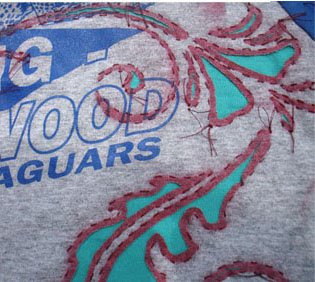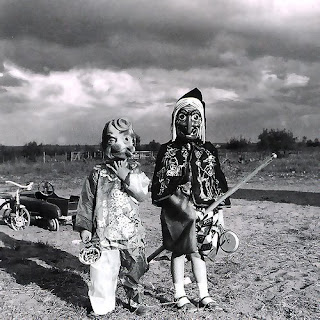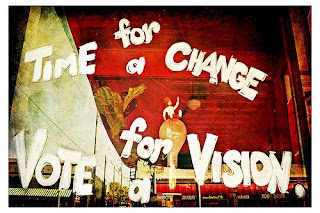
Friday, December 5, 2008
Wednesday, November 12, 2008
HOPE

 We've been super busy at Project Alabama lately updating the website. We now have our newest Green T collection posted. In addition, we have launched our partnership with HOPE organizations. We will be hosting our sample sales online with proceeds benefiting these worthy charities. I'm rather impressed by their credentials. These HOPE charities are some of the rare charities that actually use 90% of their donations towards actual programs... not marketing, print, or other costs that some charities syphon funds into. HOPE worldwide tristate funds children's education programs in the United States, while HOPE foundation is funding a school in Bhuj Gujrat, India. We are looking forward to investing in the futures of the communities that help make Project Alabama possible.
We've been super busy at Project Alabama lately updating the website. We now have our newest Green T collection posted. In addition, we have launched our partnership with HOPE organizations. We will be hosting our sample sales online with proceeds benefiting these worthy charities. I'm rather impressed by their credentials. These HOPE charities are some of the rare charities that actually use 90% of their donations towards actual programs... not marketing, print, or other costs that some charities syphon funds into. HOPE worldwide tristate funds children's education programs in the United States, while HOPE foundation is funding a school in Bhuj Gujrat, India. We are looking forward to investing in the futures of the communities that help make Project Alabama possible.
Thursday, October 23, 2008
How to Make an Off-The-Shoulder T-shirt
 This is one of my favorite projects. It's almost like magic. One takes a beat up old baseball t-shirt and presto... a shirt fit for a night on the town. This project employs our signature "Reverse Appliqué" technique. You can work with the basic Reverse Appliqué as shown or decorate the T with beading or ready-made appliques. The sky is the limit.
This is one of my favorite projects. It's almost like magic. One takes a beat up old baseball t-shirt and presto... a shirt fit for a night on the town. This project employs our signature "Reverse Appliqué" technique. You can work with the basic Reverse Appliqué as shown or decorate the T with beading or ready-made appliques. The sky is the limit.Materials Needed :
Patience! :)
1 Fitted (skin tight) Raglan Style T-shirt (baseball shirt)
1 Extra Large Recycled T-shirt (choose a color to be used as trim and reverse fabric)
Store Bought Stencils or Make Your Own
Newspaper
Embroidery Scissors or tiny sharp scissors
Large Scissors
Needle
Thread
Straight pins
Ruler
Permanent Marker
For Painting:
Spray Adhesive or Photo Mount
Textile paint or Spray paint
Optional:
Fold-over elastic
Sewing Machine
First you will need to cut the raglan shirt. Be sure to start this project with a fitted raglan t-shirt. The arms and body will need to be snug since they are the only things that help keep the shirt on. Lay your Raglan shirt out on a flat surface. Using a ruler measure from the "neck" down along the seam 3 1/2 inches. Make a mark at this measurement. Repeat on the opposite side. Now, using the ruler as a guide, draw a straight line across the front of the shirt connecting the dots. Then draw a line on each sleeve that starts at that measurement and is parallel to the bottom of the sleeve. Now that your shirt is marked, cut along the lines you just drew. Cut the sleeves so that they are 8 1/2 inches in length for a short sleeve or leave them longer for Fall wear. (See illustrations below.)
 Now you're ready to decorate the shirt. Place a piece of old newspaper in the middle of your T-shirt between the front and the back. The paper will prevent any of your stenciled areas from soaking through to the back layer of your T-shirt. Lay out the cut T-shirt flat. You can either trace your stencil on with permanent marker, paint it on using a dry brush technique, or spray paint it as I have done. If you are painting, lightly dust the back of your stencil with photo mount (spray adhesive). Let the glue dry (10 seconds.) The glue will keep your stencil from shifting. It will also help flatten the stencil to the shirt so that there are no gaps in between the stencil and the garment. Remember, the more stenciled areas on your shirt, the more stitching work to be done. If you are a first timer, I recommend doing just one small stenciling in the top right side.
Now you're ready to decorate the shirt. Place a piece of old newspaper in the middle of your T-shirt between the front and the back. The paper will prevent any of your stenciled areas from soaking through to the back layer of your T-shirt. Lay out the cut T-shirt flat. You can either trace your stencil on with permanent marker, paint it on using a dry brush technique, or spray paint it as I have done. If you are painting, lightly dust the back of your stencil with photo mount (spray adhesive). Let the glue dry (10 seconds.) The glue will keep your stencil from shifting. It will also help flatten the stencil to the shirt so that there are no gaps in between the stencil and the garment. Remember, the more stenciled areas on your shirt, the more stitching work to be done. If you are a first timer, I recommend doing just one small stenciling in the top right side.*Sometimes spray paint doesn't adhere and dry properly on rubbery plastic like ink found on some newer ts. If you have a t-shirt with this thick screen-printing on it, use a spray paint made to paint plastic. That should work.
 While your stenciling is resting :) , you will need to dissect your other shirt to harvest the scrap material for your reverse backing fabric. See the illustration below. Cut along the red dotted lines. *Cut the hem off carefully right below the stitched hem line. This piece is the trim that will finish your garment so make sure that your cutting is smooth and even.
While your stenciling is resting :) , you will need to dissect your other shirt to harvest the scrap material for your reverse backing fabric. See the illustration below. Cut along the red dotted lines. *Cut the hem off carefully right below the stitched hem line. This piece is the trim that will finish your garment so make sure that your cutting is smooth and even.After cutting your shirt apart you will be left with a really long folded, inch wide strip of fabric from the hem, two sleeves that are cut completely open and lying flat, one huge front piece, and one huge back piece.
 When your first shirt is done resting, you can begin stitching the design with a reverse applique method. (Find additional instructions here or here)
When your first shirt is done resting, you can begin stitching the design with a reverse applique method. (Find additional instructions here or here)Choose a piece of fabric from the above dissection that is a little bit larger than your stenciled area. Pin this jersey fabric on the inside of your shirt behind the stenciled area. Then, thread your needle with quilting or upholstery thread and tie a double knot at the end. Begin stitching around the edge of one of the stenciled shapes on your stencil. Using a running stitch work around each shape.
 Once everything is stitched, pull up the top layer in the center of your design and clip a tiny hole for your scissor to fit in. Now just trim away the top, painted layer on the center of your design. Make sure that you do not cut any closer than 1/8” to your stitching line as the fabric might eventually tear away from the stitching and leave a hole in your beautiful work. Repeat on all stencil shapes that are large enough to trim and still leave 1/8" of paint showing. (Some of the smaller areas in my design have just been cut up the middle with nothing trimmed away, while others have no cuts at all.)
Once everything is stitched, pull up the top layer in the center of your design and clip a tiny hole for your scissor to fit in. Now just trim away the top, painted layer on the center of your design. Make sure that you do not cut any closer than 1/8” to your stitching line as the fabric might eventually tear away from the stitching and leave a hole in your beautiful work. Repeat on all stencil shapes that are large enough to trim and still leave 1/8" of paint showing. (Some of the smaller areas in my design have just been cut up the middle with nothing trimmed away, while others have no cuts at all.)Lastly, you will need to Finish the top edge of the t-shirt. Being careful not to stretch the t-shirt out of shape, pin the hem strip from your dissected T (or use the fold-over elastic) around the top. Starting at the back of your shirt, sandwich the T in-between the hem piece. Be sure that the shirt edge fits all the way up inside the folded hem piece. Once pinned in place, secure the hem with a feather stitch, herringbone stitch or other stretchable embroidery stitch. If you are completely over hand work by this point, you can always stitch the hem on using a machine zig zag stitch.
*If you are a seasoned seamstress, you may want to finish the edge with fold-over elastic. Elastic is kind of tricky as you have to slightly stretch it as you sew. Using elastic is the only way to positively ensure that your T keeps it's shape while you are wearing it. Elastic sewing tutorials here or here.

We provide links to other web sites that we think might be helpful to our readers. By providing these links, we are not endorsing the products distributed by publishers at those sites, and we are not responsible for any materials at any other site. We make no representation or warranties with respect to any web site of others. Likewise, the existence of a link to another web site does not imply that the person or organization at that web site endorse any of the materials at this web site.
Getting into the Spirit

Wednesday, October 22, 2008
Undecided Voter

Tuesday, October 21, 2008
Remembering Halloween

My sister and I were talking about Halloween costumes and festivities when we were kids. We are both disappointed that we are seeing less and less creative and recycled costumes these days. Our favorite part of the year was imagining and designing our costumes. We had this trunk in the attic of costume parts. It was a literal treasure chest of old clothes, costumes my mom wore as a girl, weird hats, my dad's cap and gown from high school, an old US Navy uniform, my Grandma's prom dress all mixed in with old wigs, costume jewelry, and other odds and ends... everything a kid would need to imagine a character for Halloween. This Halloween trunk was the best! We would dig inside and pull out one or two pieces and present our ideas to the matriarchs of our family. They would add the necessary makeup and re-purposed props to make our designs a reality. One year, I was "Ms Kitty" from "Gunsmoke" (don't ask). The magic trunk produced an old floor length red skirt with ruffle under skirt and a big purple feather for my hair. My mom added a purple bustier from her unmentionables drawer (worn over a sweatshirt to keep me modest and warm). Then all I needed was make-up and a beauty mark. The next year my cousin Jen was a gypsy. The red skirt came back out from the depths of the trunk along with various scarves and a ruffle shirt.
We both miss the Halloween trunk and have vowed to rekindle this tradition with our children and grandchildren. My daughter is five and we have been imagining characters together for the last two years. Each costume has been constructed from things we already own and a little imagination. Her costume at three years old was one of my favorites. She was a Harry Potter, Beetlejuice Fairy... all of her favorite things at once. Last year she was a Kitty Cat Fairy Viking. This year she is planning on wearing an outfit I bought her on a trip to India. She is preparing to be an Indian princess. We've had a lot of fun exploring the Indian culture online and she has already picked out the colors of her Bindi (blue center with gold ring around the outside.)
*The queen of craft and home, Martha Stewart, has some great ideas on her site for costumes. Her team has come up with a wide range of ideas from super simple no sew costumes (I was the Tulle Ghost last year. I used old sheer curtains on their way to a thrift store instead of Tulle) to more complex crafted identities.
*Thedailygreen.com has some creative ideas to turn your recycling bin refuse into creative characters. I love the little boy's Samurai costume.
If you know of some more great "home made" costume sites please leave their address as a comment. Only 10 more days to prepare :) Happy Halloween everyone.
-Shannon Schmalfeldt
Monday, October 20, 2008
How to make a Stencil

Mai's embellished t-shirt celebrating her 5th birthday.
My friend Michi gave me a great tip to make quick stencils. I had always used the method of spray mounting an image on poster board and then laboriously cutting out the design with an exacto knife. Cutting through those thick layers is difficult and time consuming. Well, his time saving tip creates a durable, multi purpose stencil with much less effort.
Once you have a design to make a stencil out of, take the artwork to the local copy center. The copy center will be able to print out your artwork ( they can even print large, poster sized images). After they print your image, have them laminate it. (Be sure that the laminate is no more than 5 ml. I had a 7 ml laminate done once and it was too thick and stiff.) So, now you have a laminated image ready for stencil cutting. Simply use your craft knife to cut and trim away the areas in your design needed to make the stencil. You'll find that cutting through this medium is much much easier than cutting through poster board, stencil plastic, or felt. It also uses fewer blades, which is a money saver. When you are finished cutting, you will have a durable, light weight, thin stencil. I find that these thin, light weight stencils are much easier to anchor with stencil adhesive to fabric and walls (whatever you throw at them), which eliminates the dreaded "under-spray" (paint creeping under the edges of your cut out areas in your stencil creating a blurry transfer).
Materials Needed:
Rotary Mat - to protect work surfaces and to help keep blades sharp
Craft Knife - try to find one with a grip. The metal ones slip around when hands get sweaty.
Laminated Artwork - use your own design laminated at the local copy shop or find a *ready made one.
Break down of Steps:
1. Have stencil artwork printed
2. Have printed artwork laminated
3. Rest your laminated design on you rotary mat. Using a craft knife (I like X-acto brand) cut away the negative areas in your stencil. The "e" in this design had to have "bridges" made to keep the center of the "e" from falling away when cut out. I left a 1/8 inch strip connecting the center of the "e" at the top and bottom. See arrows pointing these bridges out below. 4. Stencil everything that will hold still :) To use your stencil, dust the back of the stencil with stencil adhesive or re-positional adhesive. This will help keep your stencil secure and in place when working and helps keep under-spray at bay.
4. Stencil everything that will hold still :) To use your stencil, dust the back of the stencil with stencil adhesive or re-positional adhesive. This will help keep your stencil secure and in place when working and helps keep under-spray at bay.
* Be sure that your stencil has an outside border that is large enough to control paint "over-spray. " (paint floating out past the edge of your stencil onto unintended surfaces.) I usually have a 3 inch border around the edge of my stencils. However, if this isn't possible, simple protect areas that you want to be paint free by blocking them off with scraps of paper (great use for junk mail and old magazines) or old fabric. Use tape to secure the position of the "over spray barrier" to your stencil and paint away.
* Here is a link to a tutorial that will teach you to make a stencil from a picture (adobe photoshop is required.) The site also has some other stencil ideas.
* Dover publications is a gem in the world of clip art. They also have a mailing list that you can join that will email you clip art "samples of the week."
-Shannon Schmalfeldt
Wednesday, September 24, 2008
How to Fold a Fitted Sheet
-Shannon Schmalfeldt




